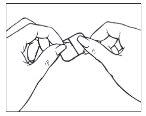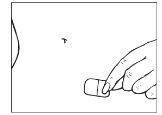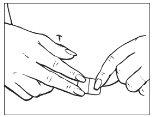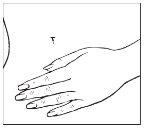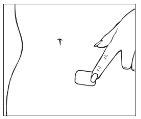
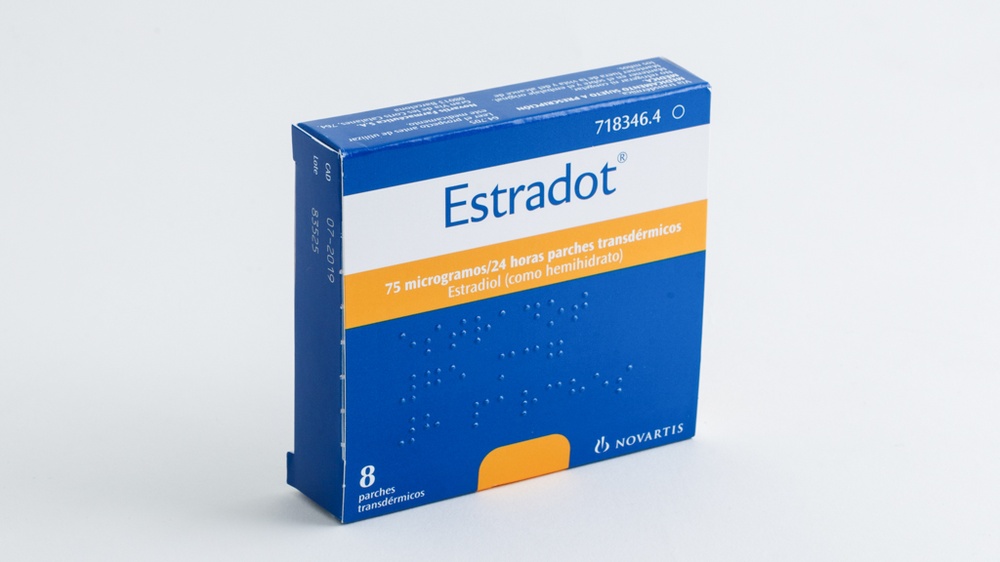
ЭСТРАДОТ 75 микрограмм/24 часа, трансдермальный пластырь

Спросите врача о рецепте на ЭСТРАДОТ 75 микрограмм/24 часа, трансдермальный пластырь

Инструкция по применению ЭСТРАДОТ 75 микрограмм/24 часа, трансдермальный пластырь
Введение
Инструкция: информация для пользователя
Эстрадот 75 микрограммов/24 часа трансдермальный пластырь
Эстрадиол (в виде гемигидрата)
Прочитайте внимательно всю инструкцию перед началом использования этого лекарства, поскольку она содержит важную информацию для вас.
- Сохраните эту инструкцию, поскольку вам может потребоваться прочитать ее снова.
- Если у вас есть какие-либо вопросы, проконсультируйтесь с вашим врачом или фармацевтом.
- Это лекарство было назначено только вам и не должно быть передано другим людям, даже если у них такие же симптомы, как у вас, поскольку оно может нанести им вред.
- Если вы испытываете побочные эффекты, проконсультируйтесь с вашим врачом или фармацевтом, даже если это побочные эффекты, которые не указаны в этой инструкции. См. раздел 4.
Содержание инструкции:
- Что такое Эстрадот и для чего он используется
- Что вам нужно знать перед началом использования Эстрадота
- Как использовать Эстрадот
- Возможные побочные эффекты
- Хранение Эстрадота
- Содержание упаковки и дополнительная информация
1. Что такое Эстрадот и для чего он используется
Эстрадот является гормональной заместительной терапией (ГЗТ), содержащей женский половой гормон эстроген.
Эстрадот используется у женщин в постменопаузе, когда прошло не менее 12 месяцев с момента последней естественной менструации.
Эстрадот выпускается в виде пластыря, который наносится на кожу.
Эстрадот используется для:
Облегчения симптомов, возникающих при менопаузе
Во время менопаузы количество эстрогенов, производимых организмом женщины, уменьшается. Это может вызвать симптомы, такие как внезапные приливы жара на лице, шее и груди (приливы). Эстрадот облегчает эти симптомы после менопаузы. Эстрадот будет назначен только в том случае, если ваши симптомы серьезно нарушают вашу повседневную жизнь.
Профилактика остеопороза
После менопаузы некоторые женщины могут развить хрупкость костей (остеопороз). Проконсультируйтесь с вашим врачом о всех вариантах лечения, доступных вам. Если у вас высокий риск развития переломов из-за остеопороза и другие лекарства не подходят для вас, вы можете использовать Эстрадот для профилактики остеопороза после менопаузы.
2. Что вам нужно знать перед началом использования Эстрадота
Медицинская история и регулярные осмотры
Использование ГЗТ связано с рисками, которые необходимо учитывать при решении о ее использовании или продолжении лечения.
Опыт лечения женщин с преждевременной менопаузой (из-за отказа яичников или операции) ограничен. Если у вас преждевременная менопауза, риски использования ГЗТ могут быть другими. Пожалуйста, проконсультируйтесь с вашим врачом.
До начала (или возобновления) ГЗТ ваш врач спросит вас о вашей личной и семейной медицинской истории. Ваш врач может решить провести физический осмотр. Это может включать осмотр ваших груди и/или внутренний осмотр, если это необходимо.
После начала лечения Эстрадотом вам необходимо регулярно посещать вашего врача для регулярных осмотров (не менее одного раза в год). Во время этих осмотров обсудите с вашим врачом пользу и риски продолжения использования Эстрадота.
Регулярно проходите осмотр груди, как рекомендует ваш врач.
Не используйтеЭстрадот
если какой-либо из следующих случаев относится к вам. Если вы не уверены в каком-либо из пунктов, описанных здесь, проконсультируйтесь с вашим врачомперед использованием Эстрадота.
Не используйте Эстрадот:
- если вы страдаете или страдали раком молочной железы, или если есть подозрение, что вы можете иметь его;
- если у вас есть гормонозависимый рак, такой как рак слизистой оболочки матки (эндометрия), или если есть подозрение, что вы можете иметь его;
- если у вас есть анормальное маточное кровотечение;
- если у вас есть гиперплазия эндометрия(чрезмерное утолщение слизистой оболочки матки) без лечения;
- если вы страдаете или страдали тромбозом(образованием кровяного сгустка в вене), например, в ногах (глубокий венозный тромбоз) или в легких (пульмонэмболия);
- если у вас есть нарушение свертываемости крови(например, дефицит белка C, белка S или антитромбина);
- если вы страдаете или страдали инфарктом миокарда, инсультомили стенокардией;
- если вы страдаете или страдали заболеванием печении ваши тесты на функцию печени не нормализовались;
- если у вас есть порфирия- редкое наследственное заболевание крови;
- если вы аллергичны(гиперчувствительны) к эстрадиолу или любому другому компоненту этого лекарства (перечисленному в разделе 6 Содержание упаковки и дополнительная информация);
Если во время использования Эстрадота вы впервые испытываете какие-либо из вышеуказанных условий, немедленно прекратите лечение и проконсультируйтесь с вашим врачом.
Предостережения и меры предосторожности
Сообщите вашему врачу, если вы страдаете или страдали каким-либо из следующих состояний до начала лечения, поскольку они могут возникнуть снова или ухудшиться во время лечения Эстрадотом. В этом случае вам следует более часто посещать вашего врача для регулярных осмотров:
- миомы матки;
- эндометриоз (рост слизистой оболочки матки вне матки) или гиперплазия эндометрия;
- повышенный риск образования тромбов;
- повышенный риск развития гормонозависимого рака (например, когда ваша мать, сестра или бабушка страдали раком молочной железы);
- повышенное артериальное давление;
- заболевание печени, например, доброкачественная опухоль печени;
- диабет;
- камни в желчном пузыре;
- мигрень или сильные головные боли;
- системное заболевание, поражающее несколько органов (системная красная волчанка, СКВ);
- эпилепсия;
- бронхиальная астма;
- заболевание, поражающее среднее ухо и слуховой нерв (отосклероз);
- высокий уровень жира в крови (триглицериды);
- задержка жидкости из-за сердечных или почечных проблем;
- наследственный и приобретенный ангioneurotic отек.
Прекратите использование Эстрадота и немедленно обратитесь к врачу.
Если вы испытываете любое из следующих состояний во время использования ГЗТ:
- любое из условий, упомянутых в разделе «Не используйте Эстрадот»
- желтуха кожи или белого цвета глаз (желтуха). Это может быть признаком заболевания печени
- отек лица, языка или горла и трудности с глотанием или крапивница, сопровождающиеся трудностями с дыханием, что указывает на ангioneurotic отек;
- значительное повышение артериального давления (симптомы могут быть головная боль, усталость, головокружение)
- мигренозные головные боли, которые возникают впервые
- если вы становитесь беременной
- если вы заметили признаки тромбоза, такие как:
- болезненный отек и покраснение ног;
- внезапная боль в груди;
- трудности с дыханием.
Для признаков тромбоза см. «Прекратите использование Эстрадота и немедленно обратитесь к врачу».
Примечание: Эстрадот не является контрацептивом. Если прошло менее 12 месяцев с момента вашей последней менструации или вам меньше 50 лет, вам может все еще потребоваться дополнительные меры контрацепции, чтобы предотвратить беременность. Проконсультируйтесь с вашим врачом, чтобы получить совет.
ГЗТ и рак
Гиперплазия эндометрия (утолщение слизистой оболочки матки) и рак эндометрия
Прием ГЗТ с использованием только эстрогенов увеличивает риск развития гиперплазии эндометрия и рака эндометрия.
Добавление прогестагена к лечению эстрогеном в течение не менее 12 дней каждого 28-дневного цикла защищает от этого дополнительного риска. Поэтому ваш врач назначит прогестаген отдельно, если у вас еще есть матка. Если вам удалили матку (гистерэктомия), спросите вашего врача, можно ли безопасно использовать это лекарство без прогестагена.
У женщин в возрасте от 50 до 65 лет, у которых еще есть матка и которые не проходят ГЗТ, в среднем 5 из 1000 будут диагностированы с раком эндометрия.
У женщин в возрасте от 50 до 65 лет, у которых есть матка и которые проходят ГЗТ только с эстрогеном, 10-60 женщин из 1000 будут диагностированы с раком эндометрия (т.е. 5-55 дополнительных случаев), в зависимости от дозы и продолжительности терапии.
Непредвиденное маточное кровотечение
Вы будете испытывать кровотечение один раз в месяц (так называемое менструальное кровотечение) во время использования Эстрадота в сочетании с прогестагеном. Но если вы испытываете непредвиденное маточное кровотечение или кровянистые выделения, которые:
- продолжаются более 6 первых месяцев;
- начинаются после того, как вы уже использовали Эстрадот более 6 месяцев;
- продолжаются после того, как вы прекратили использование Эстрадота;
обратитесь к врачу как можно скорее.
Рак молочной железы
Доказательства показывают, что использование ГЗТ с комбинацией эстроген-прогестаген или только эстрогеном увеличивает риск развития рака молочной железы. Дополнительный риск зависит от продолжительности использования ГЗТ. Дополнительный риск становится очевидным после 3 лет использования. После прекращения ГЗТ дополнительный риск уменьшается с течением времени, но риск может сохраняться в течение 10 лет или более, если вы использовали ГЗТ более 5 лет.
Сравнение
У женщин в возрасте от 50 до 54 лет, которые не используют ГЗТ, в среднем 13-17 из 1000 будут диагностированы с раком молочной железы в течение 5 лет.
У женщин 50 лет, которые начинают ГЗТ только с эстрогеном в течение 5 лет, будет 16-17 случаев на 1000 женщин (т.е. 0-3 дополнительных случая).
У женщин 50 лет, которые начинают комбинированную ГЗТ эстроген-прогестаген в течение 5 лет, будет 21 случай на 1000 женщин (т.е. 4-8 дополнительных случаев).
У женщин в возрасте от 50 до 59 лет, которые не принимают ГЗТ, будет диагностировано в среднем 27 случаев рака молочной железы на 1000 женщин в течение 10 лет.
У женщин 50 лет, которые начинают ГЗТ только с эстрогеном в течение 10 лет, будет 34 случая на 1000 женщин (т.е. 7 дополнительных случаев).
У женщин 50 лет, которые начинают комбинированную ГЗТ эстроген-прогестаген в течение 10 лет, будет 48 случаев на 1000 женщин (т.е. 21 дополнительный случай).
- Регулярно осматривайте ваши груди. Обратитесь к врачу, если обнаружите какие-либо изменения, такие как:
- борозды или складки на коже;
- изменения в сосках;
- любые уплотнения, которые вы можете увидеть или почувствовать.
Кроме того, вам рекомендуется участвовать в программах скрининга молочной железы. При скрининге молочной железы важно сообщить медсестре или медицинскому работнику, проводящему рентген, что вы используете ГЗТ, поскольку это лекарство может увеличить плотность ваших груди, что может повлиять на результат скрининга. Когда увеличивается плотность груди, скрининг может не обнаружить все уплотнения.
Рак яичников
Рак яичников возникает реже, чем рак молочной железы. Использование ГЗТ с эстрогеном или комбинацией эстроген-прогестаген связано с немного более высоким риском развития рака яичников.
Риск рака яичников варьируется с возрастом. Например, у женщин в возрасте от 50 до 54 лет, которые не проходят ГЗТ, наблюдается около 2 случаев рака яичников на 2000 женщин в течение 5 лет. У женщин, проходящих ГЗТ в течение 5 лет, наблюдается около 3 случаев на 2000 пациентов (т.е. около 1 дополнительного случая).
Влияние ГЗТ на сердце и кровообращение
Тромбоз вен (тромбоз)
Риск тромбоза венпримерно в 1,3-3 раза выше для пользователей ГЗТ, чем для непользователей, особенно в течение первого года лечения.
Тромбоз может быть серьезным и если сгусток переместится в легкие, может вызвать боль в груди, трудности с дыханием, обморок или даже смерть.
У вас больше шансов развить тромбоз в венах с возрастом и если вы испытываете какие-либо из следующих состояний. Сообщите вашему врачу, если какое-либо из следующих состояний относится к вам:
- вы не можете ходить в течение длительного периода из-за операции, травмы или болезни (см. также раздел 3, Если вам нужно хирургическое вмешательство);
- у вас есть значительный избыточный вес (ИМТ > 30 кг/м2);
- у вас есть проблема со свертываемостью крови, требующая длительного лечения препаратами, используемыми для предотвращения тромбоза;
- если у ваших близких родственников когда-либо был тромбоз в ноге, легком или другом органе;
- если у вас есть системная красная волчанка (СКВ);
- если у вас есть рак.
Для признаков тромбоза см. «Прекратите использование Эстрадота и немедленно обратитесь к врачу».
Сравнение
У женщин в возрасте 50 лет, которые не принимают ГЗТ, ожидается, что в среднем 4-7 из 1000 женщин будут иметь тромбоз вен в течение 5 лет.
У женщин в возрасте 50 лет, которые принимают комбинированную ГЗТ эстроген-прогестаген в течение 5 лет, будет 9-12 случаев на 1000 пользователей (т.е. 5 дополнительных случаев).
У женщин в возрасте 50 лет, которым удалили матку и которые были лечены ГЗТ только эстрогеном в течение 5 лет, будет 5-8 случаев на 1000 пользователей (т.е. 1 дополнительный случай).
Ишемическая болезнь сердца (инфаркт миокарда)
Нет доказательств того, что ГЗТ предотвращает инфаркт миокарда.
Женщины старше 60 лет, принимающие комбинированную ГЗТ эстроген-прогестаген, имеют немного более высокий риск развития ишемической болезни сердца, чем непользователи ГЗТ.
У женщин, которым удалили матку и которые лечатся ГЗТ только эстрогеном, нет увеличения риска развития ишемической болезни сердца.
Инсульт
Риск инсульта примерно в 1,5 раза выше для женщин, проходящих ГЗТ, чем для непассеров. Количество дополнительных случаев инсульта, связанных с использованием ГЗТ, увеличивается с возрастом.
Сравнение
У женщин в возрасте 50 лет, которые не принимают ГЗТ, в среднем 8 из 1000 женщин, вероятно, будут страдать инсультом в течение 5 лет. У женщин в возрасте 50 лет, которые проходят ГЗТ, 11 из 1000 женщин, вероятно, будут страдать инсультом в течение 5 лет (т.е. 3 дополнительных случая).
Другие состояния
- ГЗТ не предотвращает потерю памяти. Существует некоторая доказательность более высокого риска потери памяти у женщин, которые начинают ГЗТ после 65 лет. Проконсультируйтесь с вашим врачом, чтобы получить совет.
Другие лекарства и Эстрадот
Некоторые лекарства могут влиять на эффект Эстрадота. Это может вызвать нерегулярные маточные кровотечения. Это происходит с следующими лекарствами:
- Лекарства для лечения эпилепсии (например, фенобарбитал, фенитоин и карбамазепин);
- Лекарства для лечения туберкулеза (например, рифампицин, рифабутин);
- Лекарства для лечения ВИЧ (например, невирапин, эфавиренз, ритонавир, нельфинавир);
- Препараты на основе травяных средств, содержащие зверобой (Hypericum perforatum);
ГЗТ может влиять на действие других лекарств:
- Лекарство для лечения эпилепсии (ламотриджин), поскольку может увеличить частоту приступов.
- Другие противоинфекционные лекарства (например, кетоконазол, эритромицин).
- Комбинированные схемы лечения вируса гепатита C (ВГС) омбитасвир/паритапревир/ритонавир и дасабувир с или без рибавирина; глекапревир/пибрентасвир или софосбувир/велпатасвир/воксилапревир (см. раздел 4.4), могут вызвать повышение показателей функции печени в крови (повышение печеночной ферменты ALT) у женщин, использующих ГЗТ, содержащую этинилэстрадиол. Эстрадот содержит эстрадиол вместо этинилэстрадиола. Неизвестно, может ли возникнуть повышение печеночной ферменты ALT при использовании Эстрадота с этой комбинированной схемой лечения ВГС. Ваш врач проинформирует вас об этом.
Пожалуйста, сообщите вашему врачу или фармацевту, если вы принимаете или недавно принимали другие лекарства, включая те, которые можно купить без рецепта, травяные средства или другие натуральные продукты. Ваш врач проинформирует вас об этом.
Лабораторные тесты
Если вам нужно сдать анализ крови, сообщите вашему врачу или лабораторному персоналу, что вы используете Эстрадот, поскольку это лекарство может влиять на результаты некоторых анализов.
Беременность и лактация
Эстрадот является лекарством только для женщин в постменопаузе. Если вы становитесь беременной, прекратите лечение Эстрадотом и обратитесь к врачу.
Не используйте Эстрадот, если вы беременны или кормите грудью.
Вождение и использование машин
Эстрадот не имеет известных эффектов на способность управлять транспортными средствами или работать с машинами.
3. Как использовать Эстрадот
Следуйте точно инструкциям по применению этого препарата, указанным вашим врачом. Если у вас есть сомнения, проконсультируйтесь с вашим врачом или фармацевтом.
Ваш врач попытается назначить вам самую низкую дозу для лечения вашего симптома в течение самого короткого возможного периода времени. Если вы считаете, что эта доза слишком сильная или недостаточная, поговорите с вашим врачом.
Как долго вы должны использовать Эстрадот
Важно использовать самую низкую эффективную дозу и только столько, сколько необходимо.
Периодически вам необходимо будет обсудить с вашим врачом возможные риски и преимущества, связанные с использованием Эстрадота, и определить, все ли еще необходимо это лечение.
Когда начать лечение
- Если вы в настоящее время не используете никакого гормонального заместительного лечения (пластыри или таблетки) или если вы использовали комбинированный непрерывный гормональный заместительный продукт (при котором эстроген и прогестаген вводятся каждый день без перерыва), вы можете начать использовать Эстрадот в любой день.
- Если вы переходите от циклического или последовательного гормонального заместительного лечения (при котором прогестаген добавляется в течение 12-14 дней цикла), вы должны начать использовать Эстрадот на следующий день после завершения вашего предыдущего режима.
Когда применять Эстрадот
- Каждый пластырь Эстрадота должен быть заменен дважды в неделю (каждые 3-4 дня). Лучше всего всегда менять его в один и тот же день недели (например, по понедельникам и четвергам). Упаковка Эстрадота содержит календарь-контроль на обратной стороне, который поможет вам запомнить вашу схему. Отметьте схему двух дней в неделю, которую вы хотите соблюдать. Всегда меняйте пластырь в те два дня недели, которые вы отметили.
- Вам необходимо будет носить пластырь Эстрадота непрерывно до момента его замены на новый пластырь.
Любой оставшийся на коже клей можно легко удалить путем трения. Если это произойдет, поместите новый пластырь Эстрадота в другое место на коже.
Женщины, которым была удалена матка
Пластырь Эстрадота должен быть применен непрерывно без перерыва. Не требуется добавление другого типа гормона, называемого прогестагеном, если только не существует роста эндометрия вне матки (эндометриоз). Проверьте риски, которые необходимо учитывать при гормональной заместительной терапии, в разделе 2, Предупреждения и меры предосторожности.
Женщины, сохранившие матку
Ваш врач назначит вам другой гормон для приема с Эстрадотом, называемый прогестероном, для снижения риска рака матки. Если вы применяете Эстрадот непрерывно без перерыва, таблетку прогестерона необходимо принимать не менее 12-14 дней каждый месяц/цикл 28 дней. Проверьте риски, которые необходимо учитывать при гормональной заместительной терапии, в разделе 2, Предупреждения и меры предосторожности.
Вы можете испытывать нерегулярные кровотечения или пятна во время первых месяцев лечения. Если у вас сильные кровотечения или кровотечение/пятна продолжаются после нескольких месяцев лечения, поговорите с вашим врачом, чтобы он мог переоценить ваше лечение, если это необходимо (см. раздел 2, Непредвиденные кровотечения).
Где применять Эстрадот
Нанесите пластырь на нижнюю часть живота, ниже пояса. Избегайте пояса, поскольку одежда может вызвать отслоение пластыря. Не наносите пластырь на груди или рядом с грудью.
Когда вы меняете пластырь, согласно вашей схеме два раза в неделю, нанесите новый пластырь в другое место. Не наносите новый пластырь в одно и то же место в течение хотя бы одной недели.
Перед применением Эстрадота убедитесь, что ваша кожа:
- чистая, сухая и свежая,
- свободная от любого пыли, масла, крема или лосьона,
- свободная от порезов и/или раздражений.
Как применять Эстрадот
Каждый пластырь находится в индивидуальной упаковке. Откройте упаковку по разрезу и выньте пластырь (не используйте ножницы для открытия упаковки, поскольку они могут повредить пластырь).
| |
Защитная пленка покрывает клеящую сторону пластыря. Эту пленку необходимо удалить перед применением пластыря на кожу. Нанесите пластырь сразу после открытия упаковки и удаления защитной пленки. Возьмите пластырь с защитной пленкой, обращенной к вам. Отделите половину защитной пленки и удалите ее. Постарайтесь избежать прикосновения к клеящей стороне пластыря пальцами.
| |
Возьмите другую половину защитной пленки, нанесите клеящую сторону пластыря на сухую область нижней части живота. Прижмите клеящую сторону к коже, чтобы она правильно приклеилась, особенно по краям. Удалите другую часть защитной пленки.
| |
Держите прямой край защитной пленки и отделите его от пластыря.
| |
Прижмите клеящую сторону к коже, чтобы она правильно приклеилась. Прижмите пластырь к коже ладонью не менее 10 секунд.
| |
Убедитесь, что пластырь был правильно нанесен на кожу, и проведите пальцами по краям, чтобы проверить хорошую связь между пластырем и кожей.
| |
При замене пластыря удалите его, сложите пополам с клеящей стороной внутрь. См. раздел 5, «Хранение Эстрадота», для получения инструкций по безопасной утилизации пластыря. Не выбрасывайте использованные пластыри в туалет.
Дополнительная практическая информация
Если пластырь был нанесен правильно, он не должен повлиять на вашу ванну, плавание, душ или упражнения. Если пластырь отслоится, например, во время ванны или душа, переместите его, чтобы удалить воду. После высыхания и остывания кожи вы можете нанести тот же пластырь в другое место на коже нижней части живота (см. «Где применять Эстрадот»).
Если пластырь не полностью приклеился к коже, используйте новый пластырь. Не имеет значения, в какой день это произошло, замените этот пластырь в тот же день, согласно вашей первоначальной схеме.
При принятии солнечных ванн или использовании солярия вам необходимо будет покрыть пластырь. При купании вы можете носить пластырь под купальником.
Если вам необходимо хирургическое вмешательство
Если вы собираетесь подвергнуться хирургической операции, сообщите вашему хирургу, что вы используете Эстрадот. Вам может потребоваться прекратить использование Эстрадота за 4-6 недель до операции, чтобы снизить риск образования血яного сгустка (см. раздел 2, Тромбы в вене). Спросите вашего врача, когда вы можете возобновить лечение Эстрадотом.
Если вы примете больше Эстрадота, чем необходимо
Если вы приняли слишком много Эстрадота, удалите пластырь. Симптомы передозировки обычно включают боль в груди и/или вагинальное кровотечение. Острая передозировка маловероятна из-за способа введения Эстрадота (пластырь выпускает лекарство постепенно). Если симптомы сохраняются, вам необходимо связаться с вашим врачом.
Если вы забыли использовать Эстрадот
Если вы забыли заменить пластырь, нанесите другой пластырь как можно скорее. Не имеет значения, в какой день это произошло, замените пластырь в те же дни, что и в вашей первоначальной схеме.
Не принимайте двойную дозу, чтобы компенсировать пропущенное применение.
Если вы прекратите лечение Эстрадотом
Прекращение лечения Эстрадотом может увеличить риск нерегулярных кровотечений или пятен. Сообщите вашему врачу, если это произойдет. После длительного периода без лечения вам необходимо будет проконсультироваться с вашим врачом, прежде чем начать использовать пластырь снова.
Если у вас есть какие-либо другие вопросы о использовании этого препарата, спросите вашего врача или фармацевта.
4. Возможные побочные эффекты
Как и все лекарства, Эстрадот может вызывать побочные эффекты, хотя не все люди испытывают их.
Следующие заболевания наблюдаются чаще у женщин, получающих гормональную заместительную терапию (ГЗТ), по сравнению с женщинами, не получающими ГЗТ:
- рак груди;
- анормальный рост внутренней стенки матки (гиперплазия эндометрия) или рак внутренней стенки матки (рак эндометрия);
- рак яичников;
- тромбы в венах ног или легких (тромбоэмболия);
- болезни сердца;
- инсульт;
- потеря памяти, если ГЗТ начинается после 65 лет.
Для получения более подробной информации об этих побочных эффектах см. раздел 2.
Некоторые побочные эффекты могут быть серьезными
Следующие симптомы требуют немедленного медицинского внимания:
- внезапная боль в груди;
- боль в груди, распространяющаяся на руку или шею;
- затруднение дыхания;
- болезненное опухание и покраснение ног;
- желтуха глаз и лица, потемнение мочи, зуд кожи (желтуха);
- кровотечения или пятна, не связанные с использованием Эстрадота в течение некоторого времени, или если это продолжается после прекращения лечения;
- изменения в груди, такие как изменение кожи груди, изменения в сосках, уплотнения, которые можно увидеть или почувствовать (рак груди);
- сильные менструальные периоды;
- головные боли мигренозного типа без объяснения.
Прекратите лечение Эстрадотом и немедленно свяжитесь с вашим врачом, если вы испытываете любой из вышеуказанных побочных эффектов.
Проверьте риски, которые необходимо учитывать при гормональной заместительной терапии, в разделе 2, Предупреждения и меры предосторожности.
Другие побочные эффекты
Эстрадот также может вызывать следующие побочные эффекты. Если вы считаете, что любой из побочных эффектов, которые вы испытываете, является серьезным, сообщите вашему врачу или фармацевту.
Очень частые побочные эффекты, могут возникать у более 1 из 10 человек:
головная боль, реакции на коже в месте применения пластыря (включая раздражение, жжение, сыпь, сухость, кровотечение, синяки, воспаление, отек, пигментация кожи, крапивница и пузыри), напряжение и боль в груди, менструальная боль, нарушение менструации.
Частые, могут возникать у до 1 из 10 человек:
депрессия, нервозность, изменения настроения, бессонница, тошнота, плохая digestия, диарея, боль в животе, ощущение вздутия, акне, сыпь, сухая кожа, зуд, рост груди, сильные менструальные периоды, выделение вязкой белой или желтой жидкости из влагалища, нерегулярные кровотечения, сильные маточные сокращения, воспаление влагалища, аномальный рост матки (гиперплазия эндометрия), боль (например, боль в спине, руках, ногах, запястьях, лодыжках), слабость, задержка жидкости (отек) в конечностях (руках и ногах), изменения веса.
Не часто встречающиеся, могут возникать у до 1 из 100 человек:
мигрень, головокружение, повышение артериального давления, рвота, изменение цвета кожи, нарушение функции печени.
Редкие, могут возникать у до 1 из 1000 человек:
онемение или покалывание рук и ног, тромбы в крови, камни в желчном пузыре, потеря волос, мышечная слабость, доброкачественный рост матки, кисты рядом с маточными трубами, полипы (небольшие уплотнения) в шейке матки (цервикальном канале), изменения в сексуальном влечении, аллергические реакции, такие как сыпь.
Очень редкие, могут возникать у до 1 из 10000 человек:
крапивница, признаки тяжелой аллергической реакции (включая затруднение дыхания; отек лица, языка, горла или кожи; головокружение и крапивница), снижение толерантности к углеводам, непроизвольные движения, которые могут повлиять на глаза, голову и шею, дискомфорт при ношении контактных линз, тяжелые кожные реакции, чрезмерный рост волос.
Побочные эффекты с неизвестной частотой(не могут быть оценены с помощью доступных данных):
рак груди, аномальный результат функционального теста печени, аллергический воспаление кожи, уплотнения в груди (не раковые).
Следующие побочные эффекты были зарегистрированы в связи с другими гормональными заместительными препаратами:
- болезнь желчного пузыря
- различные кожные расстройства:
- потемнение кожи, особенно на лице или шее, известное как «беременные пятна» (хлоазма);
- болезненные узлы и покраснение на коже (эритема нодоза);
- кожная сыпь с покраснением в форме мишени или язв (эритема мультиформе);
- снижение памяти или умственной способности (возможная деменция)
Сообщение о побочных эффектах
Если вы испытываете любой побочный эффект, проконсультируйтесь с вашим врачом или фармацевтом, даже если это возможные побочные эффекты, которые не перечислены в этом листке. Вы также можете сообщить о них напрямую через Испанскую систему фармаковигиланса для лекарственных средств для человека (https://www.notificaram.es). Сообщая о побочных эффектах, вы можете способствовать предоставлению более подробной информации о безопасности этого препарата.
5. Хранение Эстрадота
- Храните это лекарство вне поля зрения и досягаемости детей.
- Храните Эстрадот в оригинальной упаковке, в прохладном и сухом месте. Как только упаковка открыта или защитная пленка удалена, нанесите пластырь на кожу немедленно.
- Не храните Эстрадот в холодильнике или не замораживайте.
- Не используйте это лекарство после даты истечения срока годности, указанной на упаковке после CAD/EXP. Дата истечения срока годности - последний день месяца, указанного.
- Не используйте это лекарство, если вы заметили, что упаковка повреждена или имеет признаки вскрытия.
- После удаления пластыря сложите его пополам с клеящей стороной внутрь и храните в безопасном месте, недоступном для детей. Использованные или неиспользованные трансдермальные пластыри должны быть утилизированы в соответствии с местными правилами или возвращены в аптеку, предпочтительно в оригинальной упаковке.
- Лекарства не должны быть выброшены в канализацию или в мусор. Поместите упаковку и лекарства, которые вам больше не нужны, в пункт сбора аптеки. Если у вас есть сомнения, спросите вашего фармацевта, как избавиться от упаковки и лекарств, которые вам больше не нужны. Таким образом, вы поможете защитить окружающую среду.
6. Содержание упаковки и дополнительная информация
Состав Эстрадота
Каждый пластырь 75 микрограммов/24 часа содержит 1,17 мг эстрадиола (в виде гемигидрата) и выпускает около 75 микрограммов эстрадиола каждые 24 часа.
- Активное вещество - эстрадиол (в виде гемигидрата).
- Другие компоненты клеящей пленки пластыря: акриловый клей, силиконовый клей, олеиновая кислота, дипропиленгликоль, повидон (Е1201).
- Поддерживающий слой - сополимер этилена/винилацетата и ламинированный сополимер винилиденхлорида/метилакрилата.
- Защитная пленка (которая удаляется перед нанесением пластыря) - полимерная пленка, покрытая фторполимером.
Внешний вид продукта и содержание упаковки
Эстрадот 75 - это прямоугольный пластырь размером 7,5 см2 с закругленными краями, состоящий из клеящей пленки, чувствительной к давлению, содержащей эстрадиол, прозрачной поддерживающей пленки на одной стороне и защитной пленки на другой.
Эстрадот доступен в четырех разных концентрациях: 25, 37,5, 50 и 75 микрограммов/24 часа. Возможно, что не все концентрации доступны.
Эстрадот доступен в упаковках по 2, 8, 24 и 26 пластырей. Возможно, что не все форматы доступны.
Владелец разрешения на маркетинг
BEXAL ФАРМАЦЕВТИКА, С.А.
Бизнес-центр Парке Норте
Здание Робле
Улица Серрано Гальваче, 56
28033 Мадрид
Испания
Производитель
Новартис ФАРМАЦЕВТИКА, С.А.
Гран-Виа де лез Кортс Каталянес, 764
08013 Барселона
Испания
Новартис Фарма ГмбХ
Ронштрассе 25
Д-90429 Нюрнберг
Германия
Это лекарство разрешено к применению в государствах-членах Европейского экономического пространства и в Великобритании (Северной Ирландии) под следующими названиями:
Австрия: Эстрадот
Дания: Вивелле.dot
Финляндия: Эстрадот
Франция: Вивелледот
Хорватия: Эстрадот
Исландия: Вивелле.dot
Ирландия: Эстрадот
Норвегия: Эстрадот
Португалия: Эстрадот
Испания: Эстрадот
Швеция: Эстрадот
Великобритания (Северная Ирландия): Эстрадот
Дата последнего пересмотра этого листка:май 2025
Другие источники информации
Подробная информация о этом лекарстве доступна на сайте Испанского агентства по лекарственным средствам и медицинским изделиям (AEMPS) http://www.aemps.gob.es/
- Страна регистрации
- Активное вещество
- Требуется рецептДа
- Производитель
- Информация носит справочный характер и не является медицинской рекомендацией. Перед приемом любых препаратов проконсультируйтесь с врачом. Oladoctor не несет ответственности за медицинские решения, принятые на основе этого контента.
- Аналоги ЭСТРАДОТ 75 микрограмм/24 часа, трансдермальный пластырьФорма выпуска: ГЕЛЬ, 0,5 мгАктивное вещество: ЭстрадиолПроизводитель: Orion CorporationТребуется рецептФорма выпуска: ГЕЛЬ, 1 мгАктивное вещество: ЭстрадиолПроизводитель: Orion CorporationТребуется рецептФорма выпуска: ТРАНСДЕРМАЛЬНЫЙ ПЛАСТЫРЬ, 3 мгАктивное вещество: ЭстрадиолПроизводитель: Merus Labs Luxco Ii S.À.R.L.Требуется рецепт
Аналоги ЭСТРАДОТ 75 микрограмм/24 часа, трансдермальный пластырь в других странах
Лучшие аналоги с тем же действующим веществом и терапевтическим эффектом.
Аналог ЭСТРАДОТ 75 микрограмм/24 часа, трансдермальный пластырь в Польша
Аналог ЭСТРАДОТ 75 микрограмм/24 часа, трансдермальный пластырь в Украина
Врачи онлайн по ЭСТРАДОТ 75 микрограмм/24 часа, трансдермальный пластырь
Консультация по дозировке, побочным эффектам, взаимодействиям, противопоказаниям и продлению рецепта на ЭСТРАДОТ 75 микрограмм/24 часа, трансдермальный пластырь – по решению врача и с учетом местных правил.





